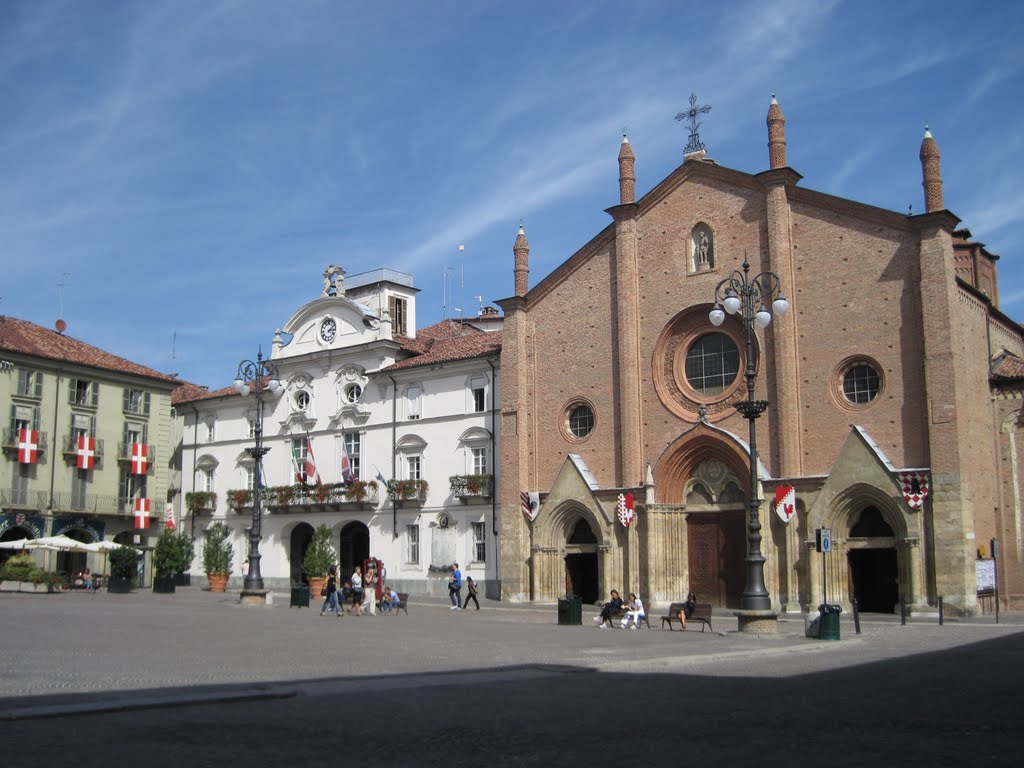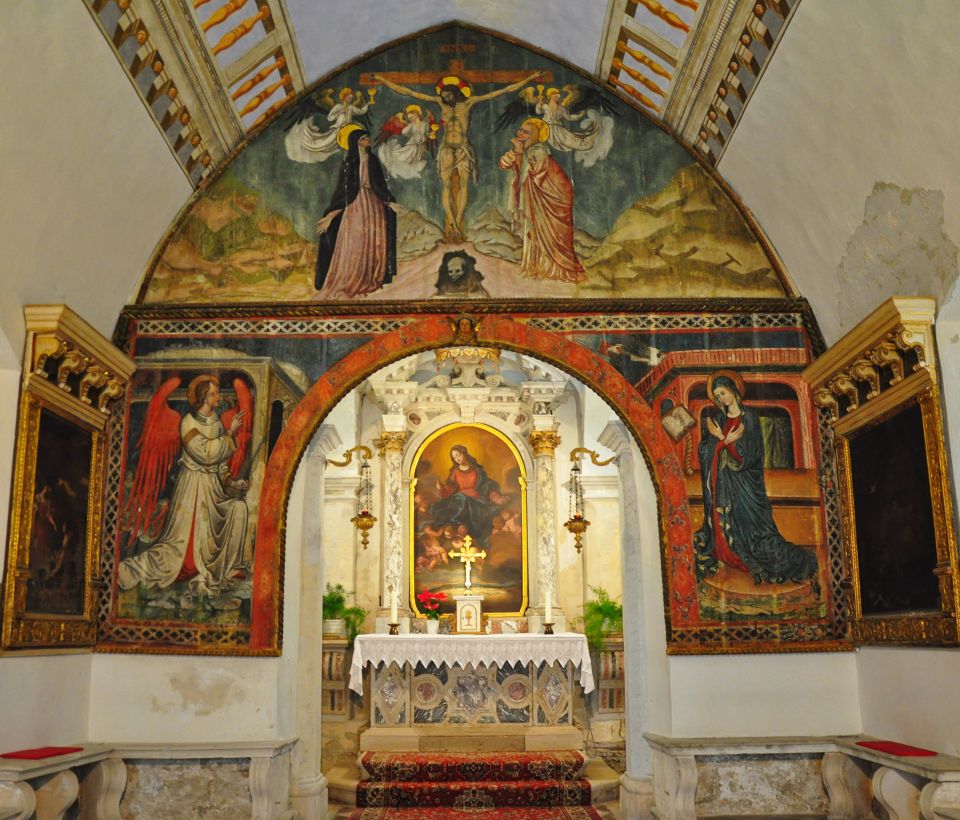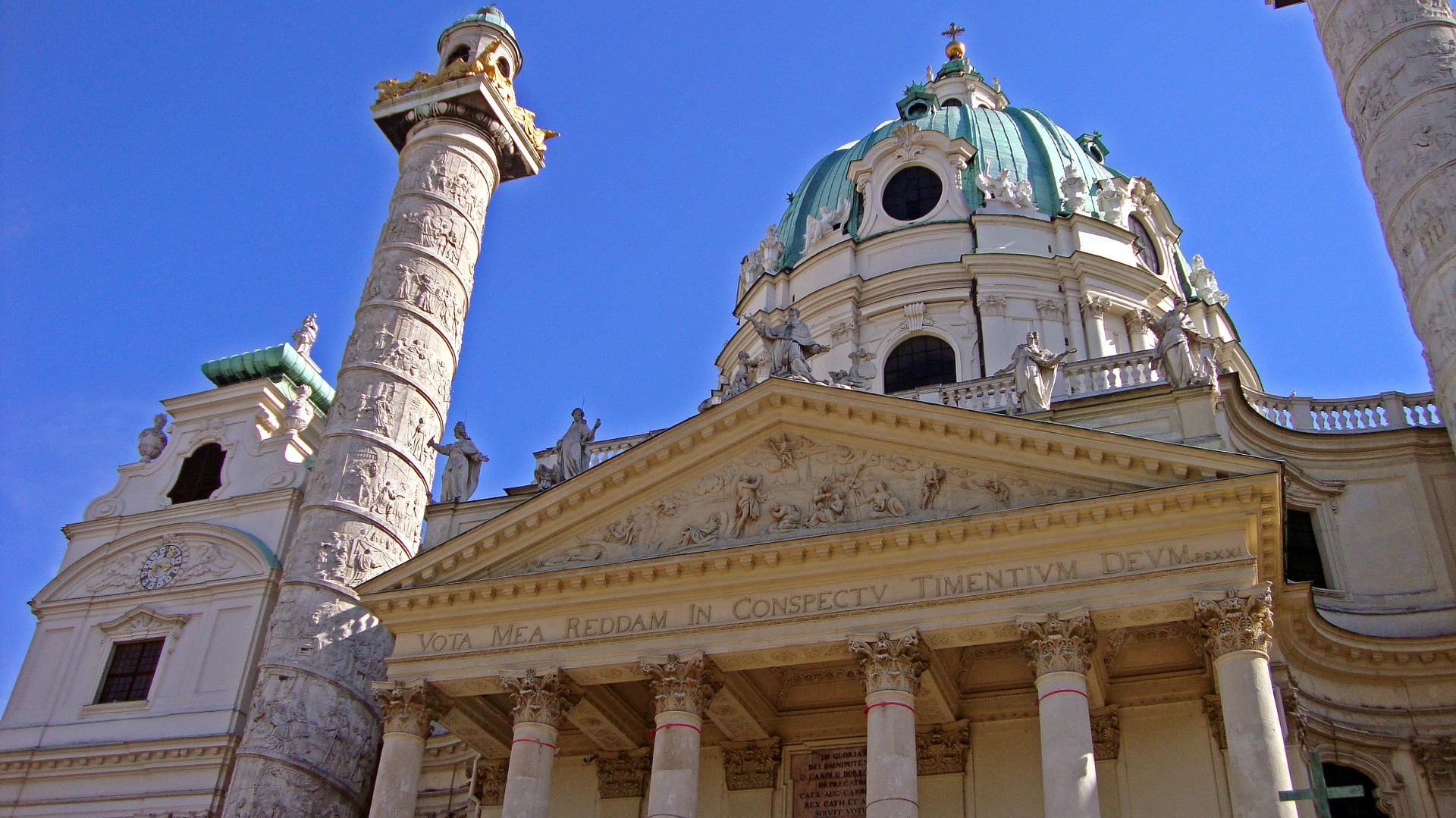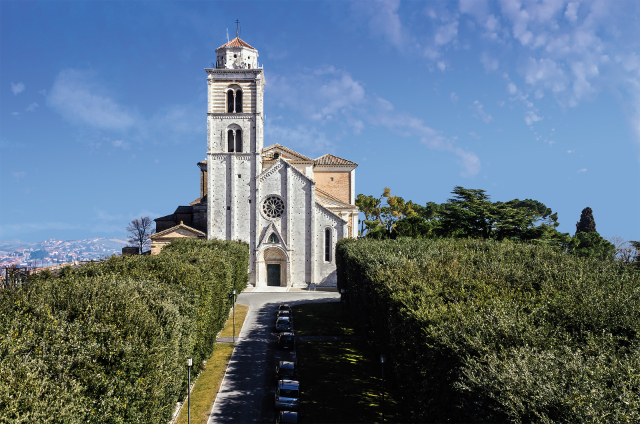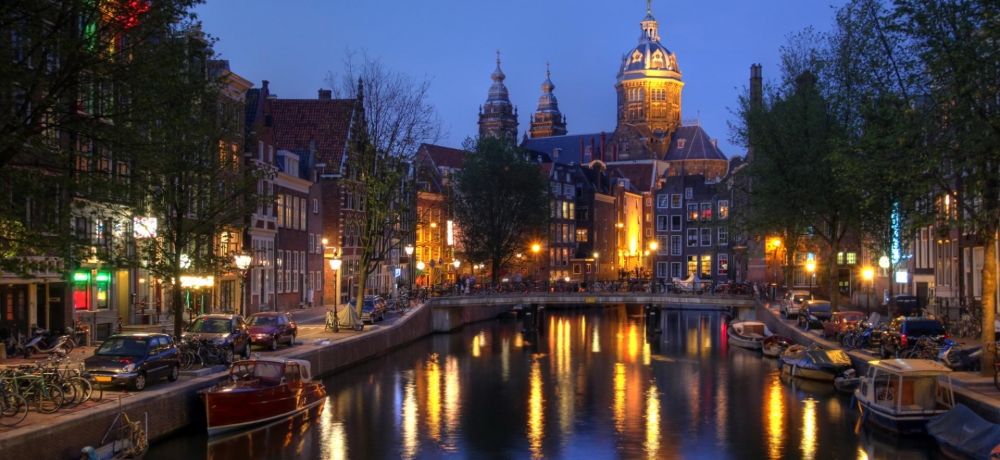The history of the Gothic church of San Secondo, the patron saint of the city, is still largely incomplete and poorly documented.
ut however, from the end of the 19th century to the present, the bibliography that has appeared on the subject, together with the data that emerged during the 1960s restorations, make it possible to reconstruct, albeit summarily, its main construction events. The origin of the church is highly controversial precisely because the account of St. Secondo appears to be full of contradictions, and therefore historically not usable; tradition has it, in fact, that the Roman soldier Secondo, who became a Christian through the intercession of St. Calogero, lived in the 2nd century AD and was martyred on the very spot where the church named after him would shortly afterwards have risen: in reality, says A. Crosetto, there is no explicit confirmation of the existence of a primitive early Christian church.
The facade,in terracotta with a sandstone base, is gabled, vertically tripartite by buttresses, with rose windows and splay portals; above the central rose window, larger than the others in size and decoration, is a niche with a copy of the statue of the saint. The pinnacles and wrought-iron cross date from nineteenth-century restorations. The side doors are nineteenth-century, while the central one is dated 1727 and is surmounted by a lunette with two trefoil arches containing frescoes of St. Peter and St. Paul, and in the central quadrilobe shows a marble sculpture of Ecce homo. The plan is basilical with three naves with a transept and an irregular octagonal dome; the nave ends with a five-sided polygonal apse; the left aisle ends with a rectangular apse, and the right aisle, the chapel of St. Secondo, with a semicircular apse, flush with that of the nave after alterations made in the 18th century by arch. Bernardo Vittone. The pillars are brick bundles with sandstone capitals. The naves are covered by cross vaults with terracotta ribs and circular stone keystones bearing carved insignia of noble families. The left aisle houses two chapels near the transept while the right aisle four five-sided polygonal chapels. All chapels serve the function of buttresses for the pillars. Notable works of art enrich the collegiate church: the masterpiece by Gandolfino da Roreto in the left aisle, polyptych of the Nativity of Jesus (16th cent.), the wooden altar by G. Badarello in the right transept, and some finds of very early 15th-century frescoes of the Lombard school. Also visible inside is Michael Enatem’s large carved and painted wooden crucifix, dated 1658, which was placed on the triumphal arch above the altar facing the people in 1974 after restoration work was completed, but whose provenance and coat of arms at the base of the cross is unknown.
